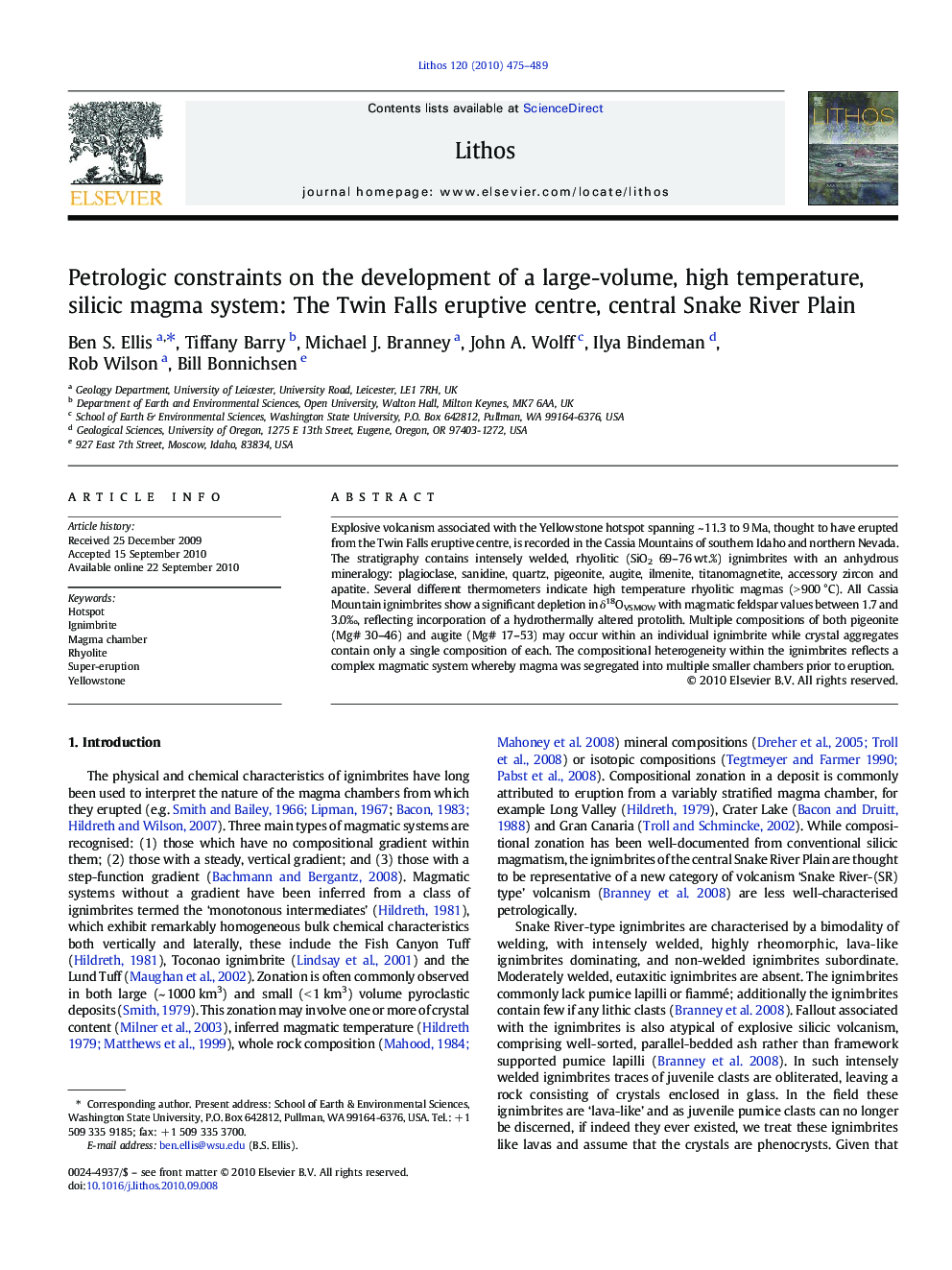| Article ID | Journal | Published Year | Pages | File Type |
|---|---|---|---|---|
| 4716859 | Lithos | 2010 | 15 Pages |
Explosive volcanism associated with the Yellowstone hotspot spanning ~ 11.3 to 9 Ma, thought to have erupted from the Twin Falls eruptive centre, is recorded in the Cassia Mountains of southern Idaho and northern Nevada. The stratigraphy contains intensely welded, rhyolitic (SiO2 69–76 wt.%) ignimbrites with an anhydrous mineralogy: plagioclase, sanidine, quartz, pigeonite, augite, ilmenite, titanomagnetite, accessory zircon and apatite. Several different thermometers indicate high temperature rhyolitic magmas (> 900 °C). All Cassia Mountain ignimbrites show a significant depletion in δ18OVSMOW with magmatic feldspar values between 1.7 and 3.0‰, reflecting incorporation of a hydrothermally altered protolith. Multiple compositions of both pigeonite (Mg# 30–46) and augite (Mg# 17–53) may occur within an individual ignimbrite while crystal aggregates contain only a single composition of each. The compositional heterogeneity within the ignimbrites reflects a complex magmatic system whereby magma was segregated into multiple smaller chambers prior to eruption.
Research highlights►Low δ18O rhyolites from the central Snake River Plain. ►Compositionally heterogeneous, high temperature rhyolitic ignimbrites spanning ~ 2 Ma. ►Crystal aggregates suggest magma was stored in discrete batches prior to eruption and mixed during eruption.
